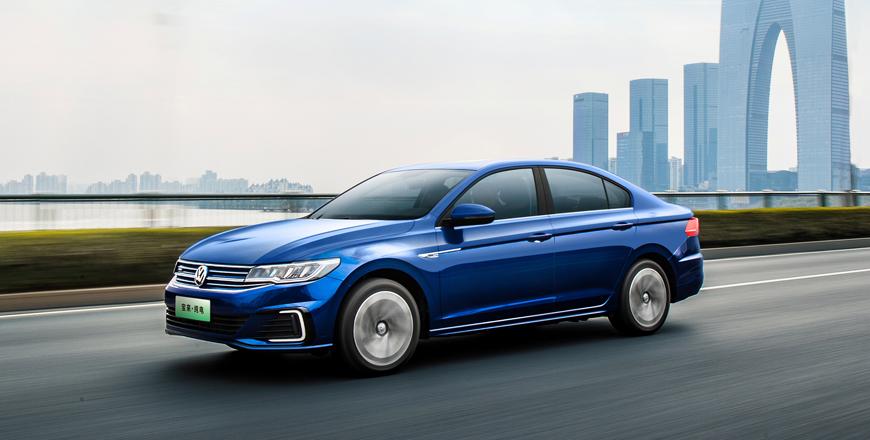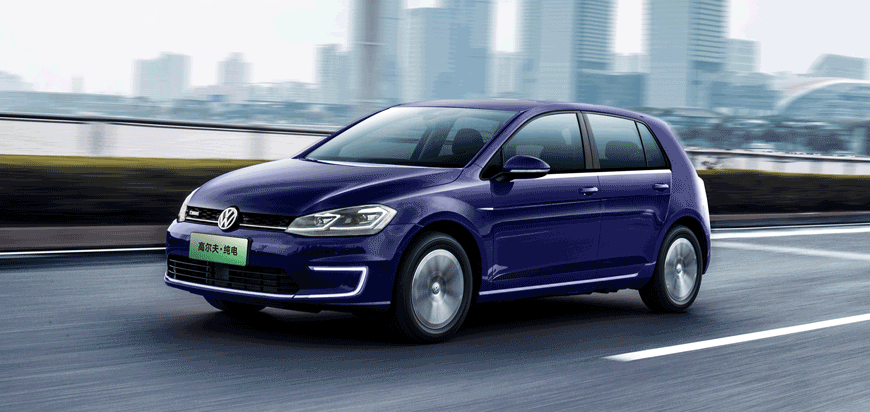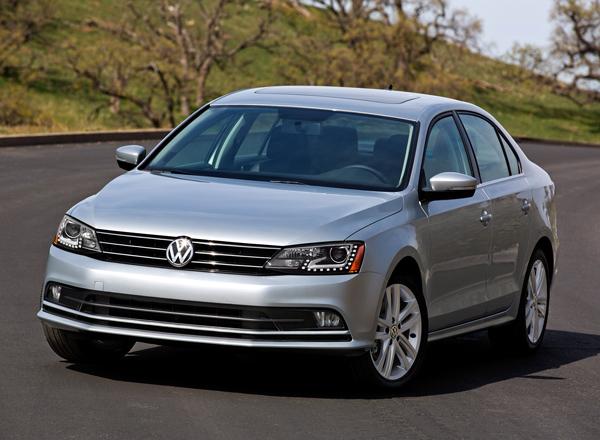You are here
Volkswagen e-Bora: Everyday EV
By Ghaith Madadha - Mar 21,2022 - Last updated at Mar 21,2022

Photo courtesy of Volkswagen
A recent and gradually more popular arrival to the Jordanian market, the Volkswagen e-Bora follows in the footsteps of the prolific seventh generation e-Golf before it, as an unofficial import and star of the independent “grey market” car dealer and trading sector. A compact electric saloon built on the same versatile and broad ranging MQB platform as the e-Golf family hatchback imported from various markets, the e-Bora is, however, a product of the German manufacturer’s Chinese market FAW-Volkswagen joint venture group.
Sportily conservative
Analogous to the US market’s Mexican-built seventh generation Volkswagen Jetta, the e-Bora is not an “official” dealership model but has effectively become the de facto successor to the combustion engine sixth generation Jetta, previously imported through authorised dealerships in the region and Jordan. A sleeker, sharper looking and more tech-imbued electric take on the compact Volkswagen saloon, the e-Bora may have a slightly more up-market aspiration than the now discontinued Mk6 Jetta, but is just as, if not more, conservative in character.
Bearing Volkswagen’s contemporarily clean lines, sharp creases and now trademark slim, wide, heavily browed and level grille and headlight combo, the e-Bora is certainly modern and up-market in its style, but has a conservative aesthetic air. More muscular than the Mk6 Jetta with its defined surfacing, rakish roofline and deep character lines — including one stretching across door handles and tapering off under its built-in boot-lid spoiler — the e-Bora has the pre-requisites for a sporty style, but nevertheless evokes a more formal design feel.
Quiet and confident
Residing under a beefed-up bonnet, the e-Bora is powered by an electric motor driving the front wheels through a single-speed automatic gearbox, as most electric vehicles, whereby its high revs and prodigious torque output compensates for a traditional multiratio gearbox. Gaining 19BHP and 15lb/ft torque over its older e-Golf relation, the e-Bora develops 134BHP and a mighty 214lb/ft. Little heavier than the e-Golf, the e-Bora is similarly capable, confident and quietly smooth, if not outright sporty in delivery, character or ultimate performance.
Only marginally heavier than the familiar older e-Golf, the hefty 1,560kg e-Bora delivers similar, if slightly improved performance, with the benchmark 0-100km/h approximately estimated as arriving in around 10-seconds. Responsive and flexible at lower and medium speeds, as often the case with EVs, the e-Bora is eager from standstill and in overtaking and inclines on city roads and dual carriageways. Riding a broad, nearly ever-present and almost instant wave of cruising speed torque, the e-Bora’s rate of acceleration trails off at higher speeds.
Comfortable commuter
Brisk through 0-50km/h at 3.5-seconds and with an improved 160km/h top speed over the old e-Golf’s low 140km/h maximum, the e-Bora’s performance at higher speeds is less authoritative than at lower speeds, and also consumes energy at a higher rate than city driving, in contrast to combustion engine cars. That said, the e-Bora’s newer 40kWh capacity Lithium-ion battery approximately doubles its driving range over the old e-Golf, to a more practical 270km according to the NEDC cycle, but expectedly less in real world conditions.
Better suited as a commuter car, the e-Bora is refined and quiet inside, smooth riding, stable and easy to drive, but its utility as long distance driver is limited by both range and charging time, as almost all EVs. Admittedly an improvement on many slightly older EVs, the e-Bora’s optimal 0-80 per cent non-domestic 50kWh fast charging time of 38-minutes is comparatively swift, but pales next to the quick convenience of a petrol fill-up. Meanwhile, 0-100 per cent charging using a 7.2kWh wall charger takes 5-hour.
Classy and uncluttered
A confident and comfortable daily driver, the e-Bora is at its best driven at a moderate pace, but can feel slightly firm over sudden, jagged bumps and potholes. Tidy and responsive turning in, the e-Bora’s generous, near-instant low-end torque can, however, elicit an instinct for torque-steer and under-steer if pushed too hard or if re-applying power too early when exiting a corner. Well controlled through corners under regular driving condition, the e-Bora’s heavy battery pack is, however, evident with sudden, spirited directional changes.
Well-insulated, the e-Bora’s cabin has a classy, uncomplicated, uncluttered and business-like ambiance, with comparatively good materials and a horizontal design orientation to emphasise space. With a comfortable and well-adjustable driving position and generally good cabin room, the e-Bora is user-friendly and easy to manoeuvre and park despite its reduced glasshouse and lower roofline next to the e-Golf, which offers better visibility and better rear headroom for taller occupants. Well-equipped for is segment, its boot meanwhile generously accommodates 532-litres, despite a large under floor battery pack.
TECHNICAL SPECIFICATIONS
Engine: Front-mounted electric motor
Battery/capacity: Lithium-ion/40kWh
Gearbox: 1-speed automatic, front-wheel-drive
Power, BHP (PS) [kW]: 134 (136) [100]
Torque, lb/ft (Nm): 214 (290)
0-50km/h: 3.5-seconds
Top speed: 160km/h
Range, NEDC: 270km
Charging time, fast charger, 50kW, 0-80 per cent: 38-minutes
Charging time, standard wall charger, 7.2kW, 0-100 per cent: 5-hours
Length: 4671mm
Width: 1,815mm
Height: 1,473mm
Wheelbase: 2,680mm
Ground clearance: 126mm
Luggage volume: 532-litres
Kerb weight: 1,560kg
Steering: Electric-assisted rack & pinion
Turning circle: 10.6-metres
Suspension: MacPherson struts, /multilink
Brakes, F/R: Ventilated discs/discs
Tyres: 205/55R16
Related Articles
The electric powered incarnation of Volkswagen’s defining modern model, the e-Golf is a familiarly discrete, handsome, classy and practical
A popular independent market import rather than official dealership model, the Chinese-built electric Volkswagen e-Golf version of the seven
Conceived as a saloon car based on and complementing Volkswagen’s mainstay Golf hatchback, the Jetta has since 1979 seen several name change














